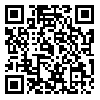Articles accepted at the time of publication
Back to the articles list |
Back to browse issues page
1- h.D Student in Linguistics, Shahroud Islamic Azad University, Shahroud, Iran
2- Assistant Professor in Linguistics, Shahroud Islamic Azad University, Shahroud, Iran ,ro.sedigh@iau.ac.ir
2- Assistant Professor in Linguistics, Shahroud Islamic Azad University, Shahroud, Iran ,
Abstract: (1447 Views)
This study examines the cognitive processes underlying the comprehension of second language idioms using two different visual instructional techniques, visual representation of literal meanings versus virtual meanings of each idiom’s visual representation. For this reason, two environments (positions) (PFL vs. PSL), two different terms (opaque vs. transparent), and two different sufficiency levels (intermediate vs. advanced) are considered, which involves common teaching methods that use dual coding theory as two different visual techniques with verbal support to teach different types of idioms. The statistical population were 67 second language learners and 63 foreign language learners who participated in this study. A term comprehension test was used before and after the training. The results of repeated measure variance analysis based on pretest-posttest comparisons showed that understanding of SL idioms is different according to the learning environment, teaching technique and the type of idiom. However, it sounds that the level of sufficiency doesn’t affect any group’s comprehension outcomes. The results show that in the SL environment, the figurative technique was more successful than the literal technique. While in the FL environment, using the literal technique compared to the figurative technique, got better scores for the language learner. PSL learners were better than PFL learners in learning terms with opaque meanings, while PFL learners performed better in learning terms with transparent meanings. The results of this investigation support the Dual Idiom Representation Model, which states that PSL learners activate their existing lexical entries and understand them figuratively, while PFL learners must analyze the idioms.
Keywords: L2 idiom comprehension, metaphorical language, cognitive processing, L2 learning environment, teaching technique
Article Type: مقالات علمی پژوهشی |
Subject:
Farsi language
Send email to the article author
| Rights and permissions | |
 |
This work is licensed under a Creative Commons Attribution-NonCommercial 4.0 International License. |







